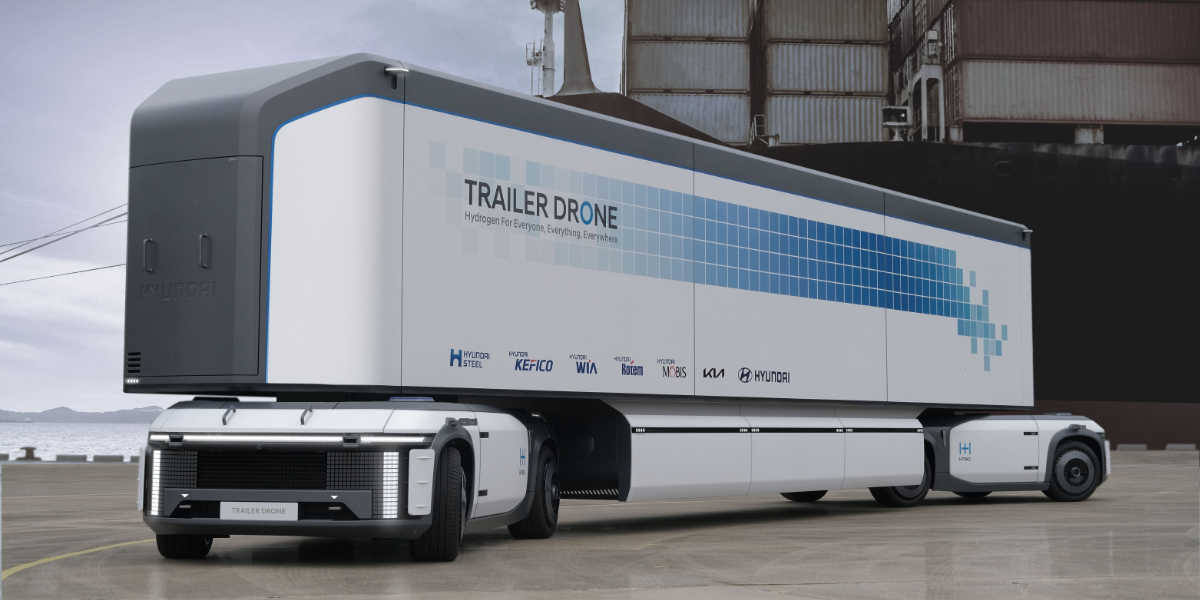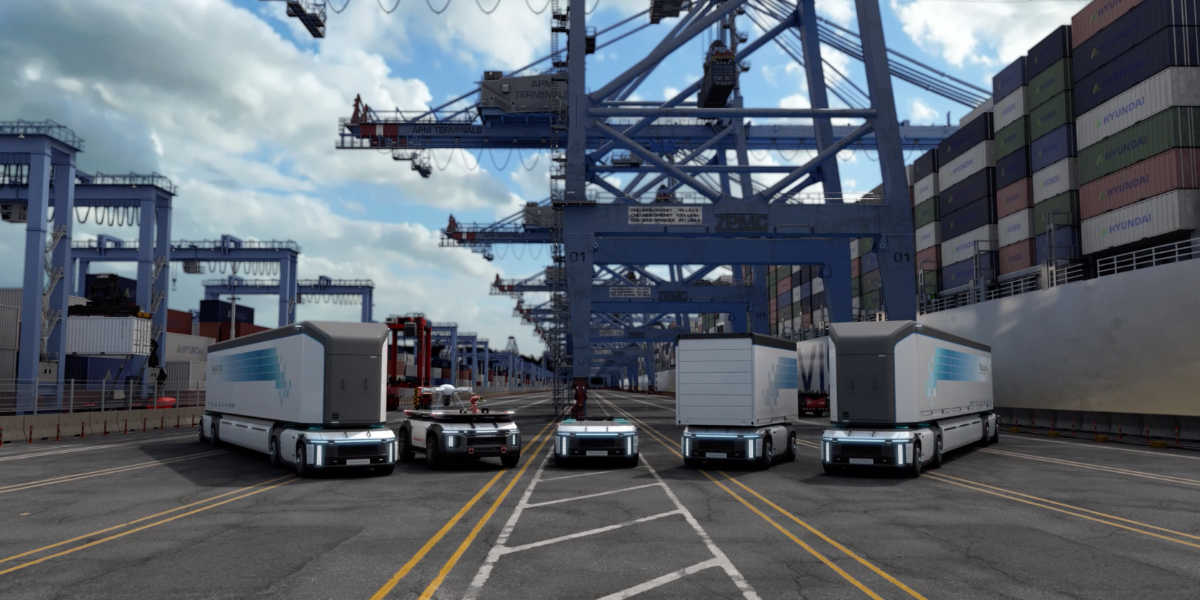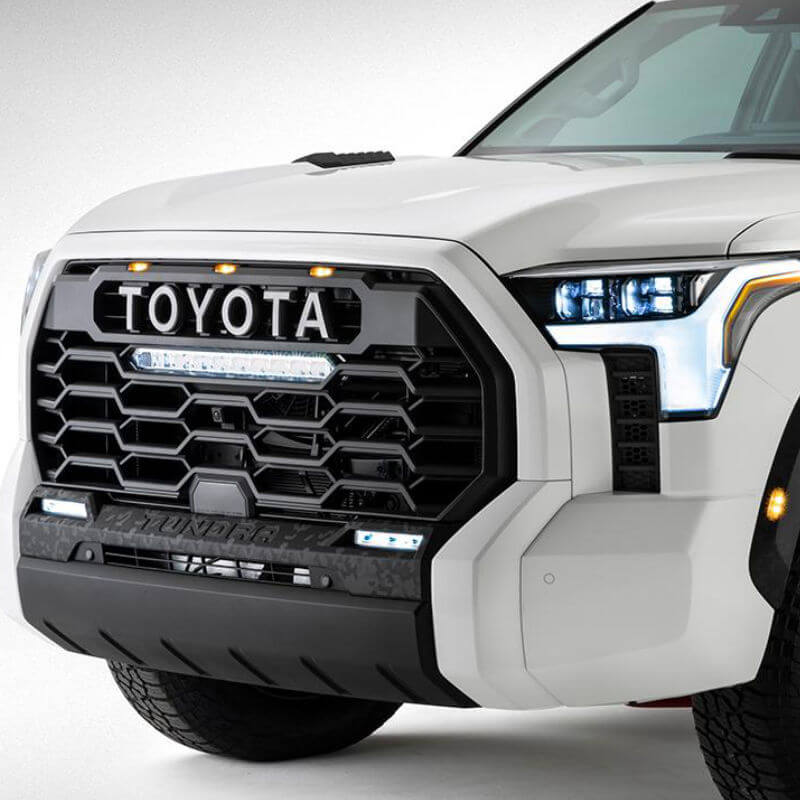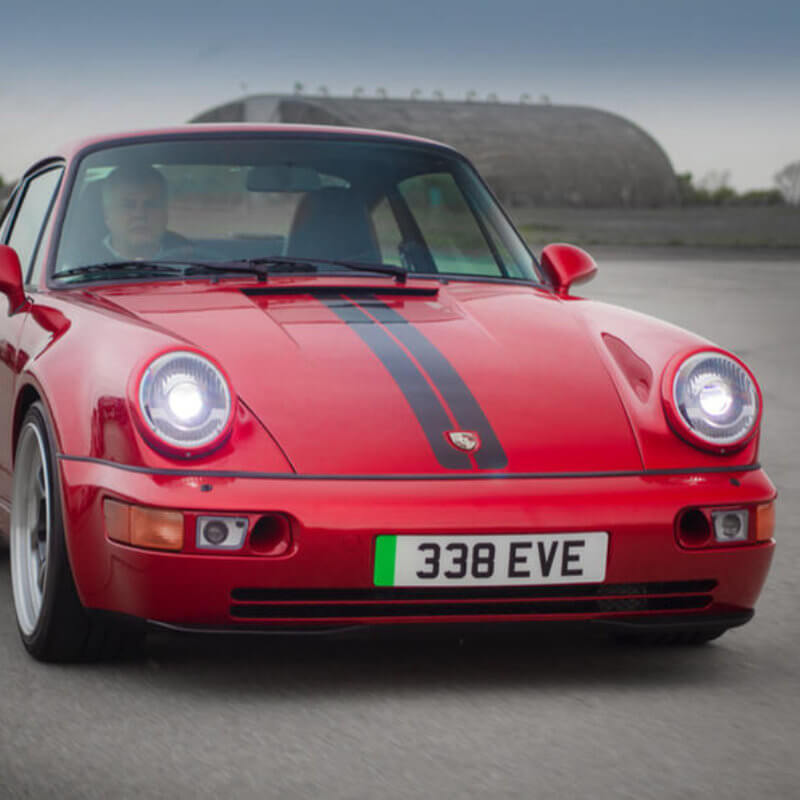Hyundai Motor Group sets out vision for hydrogen energy
The Hyundai Motor Group has set out its vision for hydrogen energy and a global hydrogen society, and its plans to popularize hydrogen by 2040 through the introduction of new technologies and mobility solutions in transportation and other industrial sectors.
At its Hydrogen Wave global online forum held this week, the Hyundai Motor Group (Group) unveiled unprecedented plans that will see the electrification of all new commercial vehicle models – featuring fuel cell electric or battery electric powertrains, as well as the application of fuel cell systems – by 2028.
This strategy, which underscores the Group’s pioneering commitment to clean sustainable energy for all types of mobility, will put the Group at the vanguard of the commercial vehicle sector, in the process helping to reshape the industry and realize a sustainable clean future with true sustainable mobility.
The Group’s central target to fully apply its commercial vehicle line-up with fuel cells by 2028 will make it the first global automaker to realize such ambitions for commercial vehicle transportation.
Representing the Group’s plans for a new “wave” of hydrogen-based products and technologies that advances the journey toward a hydrogen society, the Hydrogen Wave activities kicked off with an online presentation led by Euisun Chun, chairman of the Group, and other senior executives. The team outlined the future hydrogen strategy for fuel cell systems and fuel cell-based solutions for mobility and other areas.
“The Hyundai Motor Group’s vision is to apply hydrogen energy in all areas of life and industry such as our homes, workplaces and factories. The goal is to make hydrogen readily used for everyone, everything, and everywhere,” said Chung. “We want to offer practical solutions for the sustainable development of humanity and with these breakthroughs, we aim to help foster a worldwide Hydrogen Society by 2040.”
The online global forum will be followed by a physical “HydroVILLE” exhibition, at which the newly introduced applications and concepts will be presented. Inspired by the potential for clean hydrogen, the HydroVILLE exhibition features various fuel cell concepts for future mobility and power generation.
The Group has been preparing for the future of hydrogen since the development of its first fuel cell vehicle (FCEV) in 1998. In 2013, the Tucson FCEV (ix35 Fuel Cell) was introduced, opening the door to mass production of FCEVs. Then, in 2018, the company launched the next-generation fuel cell SUV, the NEXO, and the world’s first heavy-duty fuel cell truck, the XCIENT Fuel Cell, in 2020.
Now, the Group is backing hydrogen to play a significant role in building a sustainable future and reducing society’s dependence on fossil fuels. After two decades at the forefront of fuel cell technology development, the Group will expand its fuel cell technologies for wider applications in its vehicles, including additional mobility solutions and various energy applications.
According to the Hydrogen Council, a global CEO-led initiative of leading energy, transport, industry and investment companies, hydrogen energy will account for 18% of global energy demand by 2050, with a market size of USD 2,5 trillion. The popularization of hydrogen energy will also help cut CO2 emissions by more than 6 billion tons a year, while creating over 30 million new jobs.
Hydrogen Vision 2040: Carbon neutrality solution via an energy paradigm shift
The Hyundai Motor Group’s vision is that by 2040 hydrogen energy will be used not only for transportation, but also in wider areas of industries and sectors. The Group aims to make hydrogen energy available to “Everyone, Everything and Everywhere”. During Hydrogen Wave, the Group shares its plans to proactively respond to climate change through hydrogen solutions, starting with the commercial vehicle sector, which emits larger amounts of CO2 and requires longer drive ranges compared with the passenger vehicle sector.
As a result of such findings, the Group will launch all-new commercial vehicles such as buses and heavy-duty trucks for the global market as fuel cell electric vehicles and battery electric vehicles. By 2028, the company expects to become the first global automaker to apply its fuel cell system to all commercial vehicle models.
The Group has already started mass-producing a greatly improved version of the current XCIENT Fuel Cell, the world’s first mass produced fuel cell heavy-duty truck. It is also developing a tractor based on the XCIENT Fuel Cell that will be released in 2023. During Hydrogen Wave, the Group also unveiled the “Trailer Drone” concept, a hydrogen-powered container transportation system capable of operating fully autonomously, with a double e-Bogie configuration.
Through the development of hydrogen commercial vehicles, the Group will promote the complete transition of Korea’s public transportation and logistics systems to hydrogen-based solutions – with a view to setting the benchmark for the world.
In addition, the Group will fully re-energize global commercial vehicle markets including Europe – which consists of 400 000 new units a year – through its advanced next-generation fuel cell technologies. The Group will develop a 5 to 7-meter fuel cell PBV (Purpose Built Vehicle) to target the global light commercial vehicle market projected for sales of 7 million units per year by 2030. This will be in part undertaken by an expansion in its business capabilities and applying autonomous driving and robotics to the commercial vehicle sector.
Fuel cell systems are not only being used commercially for vehicles such as the NEXO SUV, Elec City Bus and XCIENT Fuel Cell truck, but also have the potential for deployment across diverse applications by 2040, including high-performance vehicles, urban air mobility, robots, aircrafts and large ships. As a result of such capabilities, the Group will expand the scope of fuel cell systems and technologies to all areas of the energy sector, including the provision of electricity and heating to buildings, urban energy sources and power plants.
To achieve this, the Group is planning to introduce a new generation fuel cell system in 2023 that realizes a reduced price and volume with significantly improved durability and output. Through ongoing research and development (R&D), engineering teams have been able to reduce fuel cell costs drastically over the last 20 years. By ensuring price competitiveness, the Group’s goal is to achieve a fuel cell vehicle price point comparable to a battery electric vehicle by 2030.
The Group will realize economies of scale of hydrogen production by continuous technological innovation of fuel cell systems as well as close collaboration with other organizations and governments across diverse business areas.
Next-generation fuel cell systems
The Hyundai Group has strived over many years to reduce the cost of fuel cell systems for mass application and has made great leaps in R&D. It is now presenting the results for the world to see.
During Hydrogen Wave, the Group presents a series of new fuel cell systems, including a new prototype of its third-generation fuel cell stack – a higher-powered, efficiently packaged successor to the NEXO system – that is planned for market introduction in 2023.
Third-generation fuel cell system
Currently in development, the third-generation fuel cell stack will succeed the NEXO’s current stack. At the event, the Group showcased two power versions of the third-generation fuel cell stack: 100 kW and 200 kW. The 100-kW stack has reduced in size by an astounding 30%, making it 70% in size from the current generation stack to make it easier to apply to different vehicle types and applications. The 200-kW version has been designed for commercial vehicle applications and is similar in size to the current NEXO system, but the power output has doubled.
For the second-generation fuel cell stack launched in 2018, the company achieved 5 000 hours and 160 000 km of usage, which is similar to the warranty of an internal combustion engine (ICE) vehicle. For the third-generation fuel cell development, the goal is to improve durability by 50 to 100%. High durability stacks for commercial vehicles will achieve a 500 000 km drive range. Furthermore, the price of the third-generation fuel cell stack will be dramatically reduced – with projections being upwards of more than 50% – which will be the key factor to achieving cost parity of FCEVs with BEVs by 2030.
With flexibility and modularity at its core, the third-generation system can also be applied in various application forms. A new “Power Unit Module” can offer a range of outputs from 500 kW to 1 MW by stacking 100-kW modular units, ideal for use as an emergency power system for large ships or IT companies.
Also revealed at the event is an innovative fuel cell “Full-Flat System” that lowers stack height to 25 cm, allowing it to be used for various applications such as PBVs, MPVs, buses and trams by mounting the system to either the upper or lower body of the vehicle.
The future for hydrogen mobility and Hyundai Motor Group
At Hydrogen Wave the Group presented its vision for future hydrogen mobility across several vehicle applications, from emergency relief and rescue, through to autonomous container transportation and high-performance sports cars.
Production, storage and transportation convenience will be important factors for the widespread application and the use of fuel cell technology. Under the Group’s dedicated HTWO brand for fuel cells, the Group is also unveiling new innovative concepts for portable, hydrogen refuelling facilities.
Trailer Drone
The Trailer Drone concept is a hydrogen-powered container transportation system capable of operating fully autonomously. With the number of intelligently packaged hydrogen tanks tailored to the journey profile, the flexible and efficient Trailer Drone ensures more than 1 000 km of sufficient range from a single charge, comparable to existing container transportation systems.
The autonomous capabilities of the Trailer Drone were not achieved by simply repurposing technology developed for passenger car applications. The unique requirements of container transport applications and the way container terminals operate meant that engineering teams from the Group needed to completely redefine how a container manoeuvres. As a result, the engineering team developed the “Fuel Cell e-Bogie”.
Fuel Cell e-Bogie
The term “bogie” originates from the rail industry. Rail bogies are wheel subframes that sit under every train car. The Fuel Cell e-Bogie sits under the container just like a rail bogie and is a fully enclosed system with fuel cell propulsion and fully independent four-wheel steering.
The Trailer Drone concept requires two fuel cell e-Bogies, allowing for unprecedented manoeuvrability through sideways movement. The Trailer Drone can move autonomously through portside operations and tight urban environments. Efficiency is further boosted by the “Cluster Mode” which enables multiple Trailer Drones to travel together in an almost train-like configuration.
The Fuel Cell e-Bogie is not exclusive to the Trailer Drone and caters to a wide value chain such as ground logistics, construction, firefighting and disaster relief missions. It offers a multi-purpose platform, capable of a variety of objectives – all in zero-emission and autonomous operation.
Vision FK
Fuel cell technology is equally applicable to high-performance vehicle applications. In this respect, the Group has showcased a concept hydrogen-powered hybrid sports car, the Vision FK. With a maximum output of over 500 kW, the Vision FK concept can accelerate from 0 to 100 km/h in less than four seconds. Combining a fuel cell energy converter with a high-power, rear-wheel drive, plug-in powertrain, the Vision FK aims to achieve over 600 km in range.
Rescue Drone
The Rescue Drone is a new concept mobility solution that combines with a Fuel Cell e-Bogie to create a flying drone that can be operated remotely and autonomously for critical operations such as firefighting and lifesaving. The Rescue Drone features an independent steering system for in-place turning manoeuvres and “crab-walk” driving. It can also carry out missions via images transmitted from drones mounted on the vehicle exterior and achieves a 450 to 500 km driving range from a single charge.
H Moving Station
The H Moving Station is a heavy-duty vehicle equipped with charging facilities for FCEVs. This portable hydrogen refuel station ensures convenience as well as charging options in areas with limited refuel stations.
RHGV (Rescue Hydrogen Generator Vehicle)
The RHGV supplies power to vehicles in aid of urgent assistance in remote, off-road areas. The portable electric vehicle charger offers single-phase 220V and 3-phase 380V simultaneous power supply.
Hydrogen Future: a new energy for a new society
As a responsible member of the global community, Hyundai Motor Group will continue to develop hydrogen mobility, expand the production system of fuel cells and establish infrastructures for a global hydrogen society.
“The degree and frequency of environmental disasters is rising fast and we now face a code red warning for humanity,” said Chung at the global online forum. “The Group seeks to offer powerful and pragmatic solutions for combatting climate change via the tremendous potential of hydrogen energy.”
Hyundai Motor Group HydroVILLE exhibition
Following this week’s Hydrogen Wave online global forum, the Group will present its plans for hydrogen energy and a global hydrogen society at its “Hydrogen Village” (HydroVILLE) exhibition in Goyang, Korea, from 8 to 11 September.
Inspired by the potential for clean hydrogen, HydroVILLE is divided into various zones to illustrate the Group’s future hydrogen vision. The exhibition space features several fuel cell concepts for future mobility and power generation, including 18 models from Hyundai Motor Group affiliates, including Hyundai Motor, Kia, Hyundai Mobis, Hyundai Rotem, Hyundai Steel, Hyundai Wia and Hyundai Kefico.
Article by QuickPic and Hyundai Motor Group.









